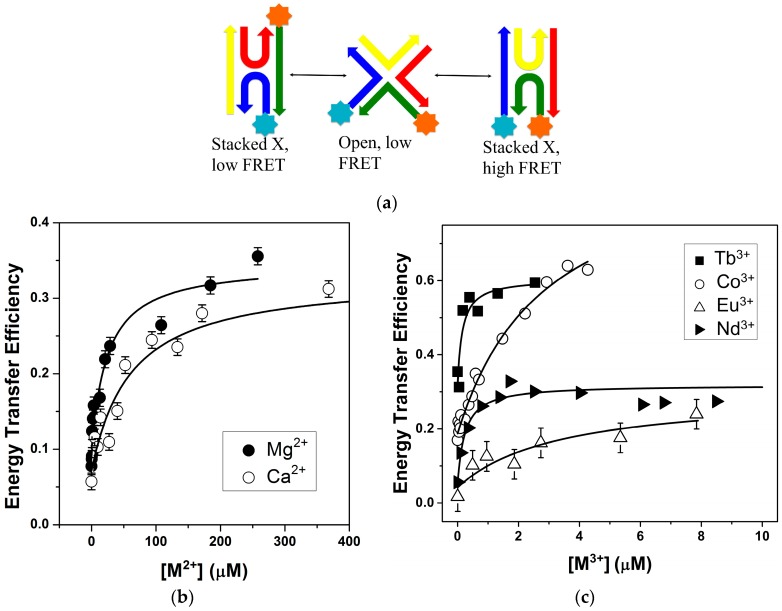Figure 1.
Increasing multivalent cation concentration folds the junction bringing the labeled arms of the DNA closer together and increases transfer efficiency. (a) Schematic of the junction folding that is induced by ion binding. The R and X strands have a linker at the 5′ end for attachment of the fluorescein (FAM) and tetramethylrhodamine (TAMRA) dyes, which are in close proximity in the high FRET, isoII conformation; (b) Fitting of binding curves yielded apparent Kd values of 55 ± 19 and 22 ± 8 μM for Ca2+ and Mg2+, respectively; (c) Fitting of binding curves yielded apparent Kd values of 4 ± 0.3, 0.1 ± 0.1, 3 ± 2 and 0.7 ± 0.3 µM for [Co(NH3)6]3+, Tb3+, Eu3+ and Nd3+, respectively. Titrations of cobalt hexamine contained 5 mM Na+, while all other titrations contained only 0.5 mM Na+. For clarity of presentation, the Co3+ and Tb3+ data are offset from the y-axis by +0.15 and +0.3, respectively, and only the error associated with the Eu3+ data is shown. The other ion binding curves have similar error and error bars. All titrations were performed at 10 °C in a 10 mM Tris–HCl pH 7.4 buffer.

